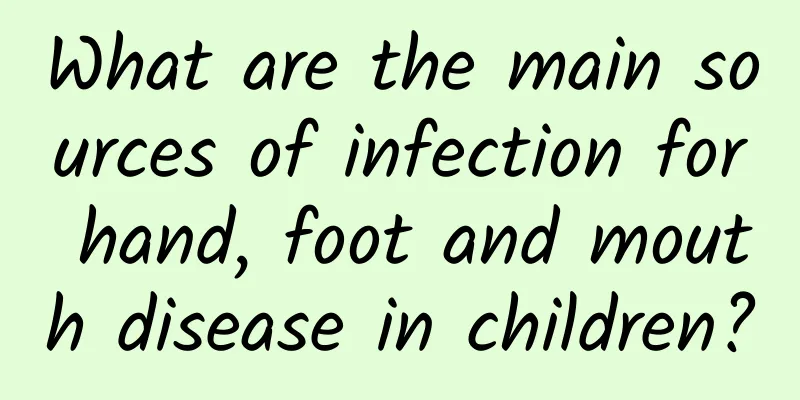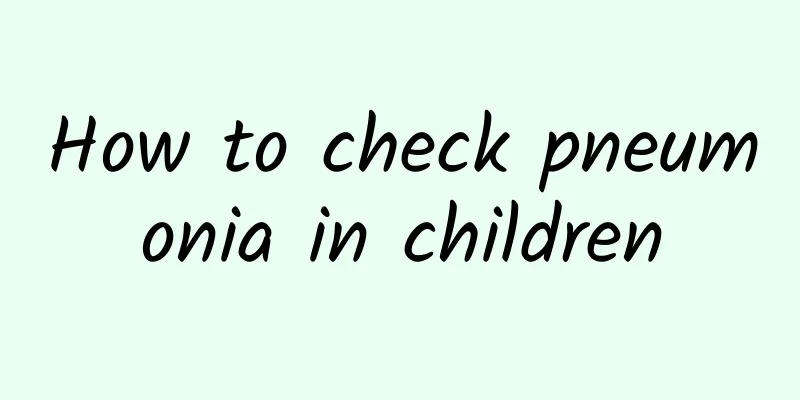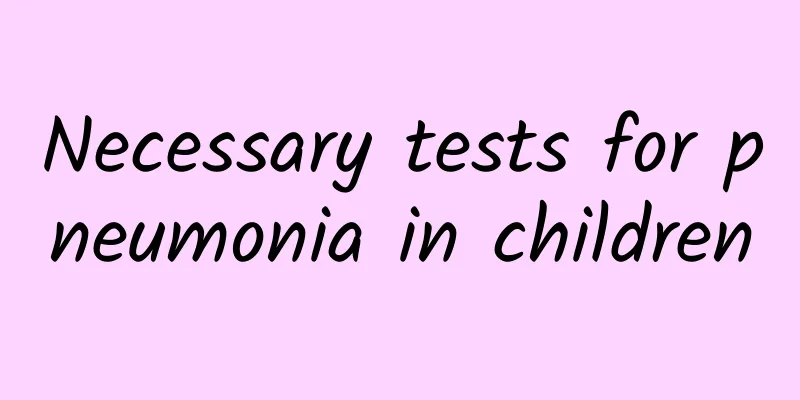What are the main sources of infection for hand, foot and mouth disease in children?

|
The main sources of infection for hand, foot and mouth disease in children include the saliva, feces, herpes fluid of the children, and daily necessities such as toys and towels contaminated by them. These are the main routes of transmission. Understanding the sources of infection for hand, foot and mouth disease and taking targeted preventive measures can effectively reduce the risk of infection. 1. Saliva and respiratory secretions of the patient The main pathogens of hand, foot and mouth disease are enteroviruses, such as EV71 and coxsackievirus. These viruses are transmitted through droplets, so direct contact with the saliva of sick children, droplets spread by coughing or sneezing, may infect healthy children. It is recommended that parents teach their children to cover their mouths and noses when sneezing and coughing, and to ventilate more to dilute the pathogens in the air. 2. The child's stool The virus multiplies in the digestive tract of the child, and the feces excreted from the body still contain the virus, and the virus in the feces can survive for a long time. If the child touches objects or environments contaminated by feces and does not clean his hands thoroughly, the virus may enter the body through the "fecal-oral" route. Parents should wash their hands in time after changing their children's diapers and properly dispose of excrement. 3. Herpes fluid The small blisters caused by hand, foot and mouth disease contain high concentrations of viruses. If the blisters rupture and come into contact with the skin or mucous membranes of other children, the virus may be directly transmitted. Parents should avoid letting their children directly touch the herpes area of the child. If they do touch it, they should immediately clean their hands with alcohol-based disinfectant. 4. Contaminated toys and daily necessities The virus can attach to items that sick children touch, such as toys, towels, and tableware. If healthy children touch these items and do not wash their hands thoroughly, the virus may infect through the mouth or skin. Parents need to regularly wash items that children often use with disinfectant, and it is recommended to disinfect tableware at high temperature before each use. 5. Other transmission channels In addition to direct contact and droplet transmission, hand, foot and mouth disease virus may also be transmitted through contaminated water or food, such as eating raw vegetables or fruits that have not been thoroughly washed. Therefore, food hygiene is particularly important. Children should eat cooked food, avoid drinking raw water, and fruits and vegetables must be thoroughly washed. Parents should pay more attention to their children's contact with people in daily life, especially during epidemic seasons, and try to avoid taking children to crowded public places such as shopping malls, playgrounds, and schools. If a child is suspected of being infected, he or she should seek medical attention in time to reduce the possibility of spreading the disease to other children. Prevention measures include washing hands frequently, keeping the environment clean, and urging children to improve their awareness of self-protection, which can effectively reduce the risk of transmission of hand, foot and mouth disease. |
<<: Chinese medicine for umbilical cord plastering for children with diarrhea
>>: What to do if a newborn has jaundice and has favism
Recommend
What are the traditional Chinese medicines for treating colds in children?
Traditional Chinese medicines for treating childr...
Is it possible to cure polio?
Polio is a relatively serious disease that troubl...
Can Kawasaki disease be completely cured?
Can Kawasaki disease be completely cured? The ans...
What are the symptoms of infant jaundice hepatitis
Infant jaundice and hepatitis may cause symptoms ...
What to do if your baby has a red bottom? What to do if your baby has a red bottom?
The baby's diaper rash is a common problem th...
Does physiological jaundice require medication? Introducing scientific treatments for physiological jaundice
Neonatal jaundice is a relatively common phenomen...
Hand, foot and mouth disease is most afraid of three kinds of fruits
There are three fruits that hand, foot and mouth ...
16.6 Is neonatal jaundice serious?
16.6 Is neonatal jaundice serious? Neonatal jaund...
What complications may neonatal jaundice cause?
What complications may neonatal jaundice cause? C...
What is neonatal jaundice? Will jaundice recur?
Medically, jaundice in newborns under 28 days old...
What is the normal value of jaundice in children?
The jaundice value is generally the total serum b...
What to do if your child coughs badly in the middle of the night
Children's body resistance is relatively weak...
What is the diagnosis of jaundice?
Neonatal jaundice is a common physiological pheno...
What are the symptoms of mycoplasma infection in children?
The most common symptom of mycoplasma infection i...
What are the symptoms of mumps? What medicine can cure mumps quickly?
Mumps can be divided into two types: bacterial an...









